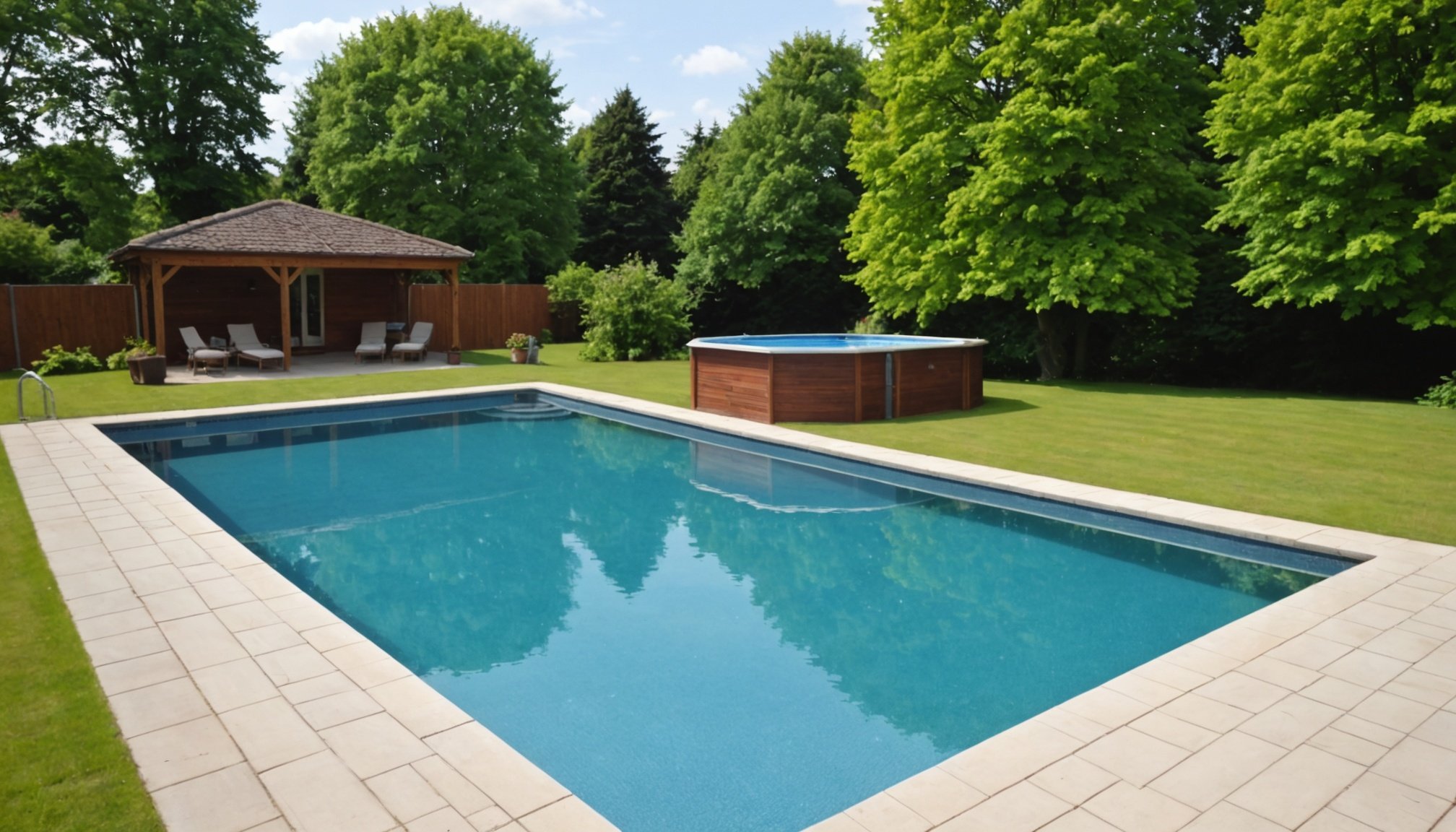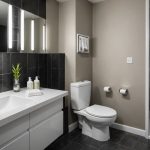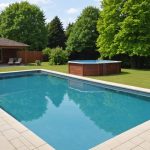Overview of Counter-Current Swimming Pool Systems
Counter-current swimming pool systems are innovative devices that create a constant water flow in a swimming pool, allowing users to swim in place. They are essential for those who wish to maximise a pool’s utility without needing extensive space. These systems typically incorporate a jet or nozzle that pumps water at a controlled speed, simulating a river-like current against which swimmers can exercise.
The benefits of counter-current systems for fitness and leisure are substantial. They enable swimmers to engage in a continuous cardiovascular workout, enhancing stamina and muscle tone. Additionally, these systems are ideal for aquatic therapy, providing gentle resistance that aids in rehabilitation. Beyond fitness, they offer a unique leisure experience by transforming a standard swimming pool into a spa-like environment.
Sujet a lire : Maximize Energy Efficiency: Top Budget-Friendly Insulation Strategies for Indoor Swimming Pools in the UK
There are various types of counter-current swimming pool systems designed to cater to different needs. Fixed systems are integrated into the pool’s structure, offering a permanent solution. In contrast, portable systems can be attached temporarily, providing flexibility for users. High-performance models are available for professional swimmers, while more basic types suit recreational use. Each type has distinct features tailored for specific applications, making it crucial for users to consider their requirements when selecting a system.
Technical Considerations for Installation
When planning your pool’s installation requirements, several technical specifications must be evaluated to ensure a seamless integration process. Firstly, examining the existing pool design is crucial, as it dictates how different systems can be accommodated without compromising efficiency or aesthetics. A well-thought-out design can significantly influence the installation success, minimising potential hurdles down the line.
A lire également : Discover the Health Benefits of Having a Swimming Pool in the UK: A Dive into Wellness!
Assessing and understanding the water flow rate in your pool is another pivotal step. This metric can dramatically impact the overall performance of your pool’s filtration system. A flow rate that is too low might lead to inadequate filtration, while an excessively high flow can cause wear and tear on equipment over time. Balancing this aspect, tailored to your specific pool requirements, helps maintain optimal functionality and longevity.
Additionally, before installation, verify the requirements for power supply, plumbing connections, and any special needs dictated by your regional climate. A detailed focus on these technical specifications aids in preventing future issues, ensuring that your pool system operates smoothly and efficiently for years to come. Planning with these considerations in mind supports a successful and hassle-free installation process.
Compliance with Local Regulations
Navigating UK regulations for pool installations requires understanding multiple layers of compliance and safety standards. In the UK, these installations are primarily governed by building regulations that ensure both structural and user safety. Compliance involves adhering to specific codes that dictate how pools should be constructed, primarily focusing on aspects such as electrical safety, water treatment, and environmental management.
Before initiating any installation, it is crucial to secure the necessary permits. These might include planning permissions from local authorities, especially if the pool’s size or location could impact neighbours or public spaces. Additionally, inspections are often mandated at various stages of the construction process to ensure that each phase meets the required safety standards.
Beyond these structural considerations, thorough adherence to safety standards is paramount. This includes implementing guidelines to ensure user safety, such as installing adequate fencing, signage, and anti-slip surfaces. Pool safety covers and alarms might also be necessary, depending on the location and intended use of the pool.
Seeking professional guidance from regulatory bodies or consultants can streamline the process, ensuring all compliance measures are diligently followed. This proactive approach not only safeguards users but also mitigates legal risks, making the enjoyment of your pool both safe and within the law.
Cost Implications
When considering pool systems, a thorough cost analysis is essential. Initial investment costs can be hefty; on average, they include equipment purchase and installation. For long-term maintenance expenses, factor in repairs, periodic servicing, and energy consumption.
Budgeting wisely for these expenses can simplify the decision-making process. Try to differentiate between initial outlays and recurring costs. Installation variables, such as pool size and existing infrastructure, significantly affect overall expenses. Complex installations often drive cost increases.
Financial considerations play a deciding role in smart choices. Energy-efficient systems are indeed costlier upfront but offer financial rewards over time. With reduced energy usage, homeowners may see considerable savings in utility bills annually. Pool owners should weigh the potential for rebates offered for eco-friendly installations, as they could offset initial costs significantly.
Additionally, the longevity and durability of high-quality systems contribute to financial advantages. Opting for a robust system could mean fewer replacements and repairs. While the initial costs might be intimidating, investing in systems prioritising efficiency and durability could yield financial advantages over a longer period. Emphasising these financial benefits during the budgeting process can guide consumers towards cost-effective and sustainable choices.
Space and Site Considerations
When planning a counter-current swimming pool system, space requirements play a crucial role. First, assess the available area thoroughly to ensure the pool fits well within the designated location. Calculating precise dimensions helps avoid complications during installation.
Moving beyond size, a site evaluation is critical. Examine not just the physical space but also the environmental factors. The orientation of the site affects sunlight exposure and wind patterns, influencing both the usability and maintenance requirements of the pool. An optimally located site can enhance the enjoyment and efficiency of the pool system.
Location also dictates the success of your swimming pool project. Consider access to utilities, as electrical requirements and water supply must be easily reachable. Moreover, drainage solutions need addressing early on. Proper drainage systems prevent waterlogging and other soil-related issues that could potentially damage the pool’s structure.
It’s beneficial to work closely with professionals who understand these complexities. Their expertise aids in creating a design that maximizes available space while considering site-specific challenges. By thoroughly evaluating and addressing these aspects, you ensure a seamless integration of a counter-current swimming pool system that meets your expectations and enhances outdoor living spaces.
Maintenance Needs
Committing to regular maintenance is crucial for ensuring the optimal performance and longevity of any system. Key tasks include cleaning filters, checking water levels, and inspecting all mechanical parts routinely. This meticulous upkeep is vital to avoid expensive repairs and prolonged downtime.
When faced with common issues like unusual noises or reduced efficiency in counter-current swimming pool systems, troubleshooting might reveal simple solutions like unclogging filters or ensuring proper alignment of parts. Many of these tasks can be tackled by the owner, allowing for immediate rectification and system longevity.
However, when it comes to complex matters, such as electrical concerns or mechanical faults, it is advisable to rely on professional servicing. A professional’s expertise ensures that all potential problems are thoroughly assessed and resolved in compliance with safety standards. This professional touch complements regular DIY maintenance, creating a balanced approach to care and extending the system’s life.
Consider incorporating a scheduling tool or logbook to track your maintenance activities. This ensures tasks are never missed, providing a comprehensive record to assist in diagnosing future issues. Through combining personal effort with professional support, the longevity and efficiency of your system can be significantly enhanced.
Energy Efficiency and Environmental Impact
Modern counter-current swimming pool systems are now designed with energy-efficient features that reduce overall power consumption, making them both eco-friendly and cost-effective. These systems often employ advanced technologies, such as variable-speed pumps that adjust their flow to the needs of the swimmer. This not only optimizes energy efficiency but also minimizes waste.
To assess the full environmental impact of these pool systems, both the installation process and operational energy use must be considered. While the initial installation can be energy-intensive, many systems are designed for long-term savings. Over time, the reduced energy bill offsets these initial expenditures, contributing less to the carbon footprint.
For more sustainable options, integrating renewable energy sources with your swimming pool system is increasingly popular. Solar panels, for instance, can power heating and pump systems, drastically reducing reliance on non-renewable power. This approach not only reinforces sustainability but also further reduces energy costs.
By evaluating these environmental considerations, pool owners can make informed decisions that benefit both their wallet and the planet. Emphasizing energy efficiency and renewable solutions is crucial in driving sustainability in aquatic facilities.
Benefits Specific to UK Climates
Counter-current swimming pools offer unique advantages in the UK due to their adaptability across varying seasons. In a climate where conditions fluctuate, these pools provide a perfect opportunity for seasonal use. While summer is ideal for outdoor swimming, the cooler UK months necessitate innovative solutions to maintain usability. Counter-current systems allow for swimming workouts similar to those in a full-sized pool, ensuring that usage isn’t restricted by weather changes.
Thermal Efficiency in Cooler Climates
A key consideration for pools in the UK is thermal efficiency. Counter-current swimming pools generally have enhanced thermal efficiency, crucial in cooler climates. They can maintain a consistent temperature, reducing the energy consumption typically required for heating large volumes of water. This makes them an appealing option for homeowners concerned with both sustainability and comfort.
Year-Round Usage Potential
The potential for year-round use is a significant benefit in the unpredictable UK climate. By relying on efficient heating systems and adjustable controls, these pools remain functional despite adverse weather. The ability to swim throughout the year, irrespective of seasonal shifts, highlights the pool’s practicality and appeal. Investing in a counter-current swimming pool thus ensures that enthusiasts can enjoy swimming regardless of external conditions.











